Fried rice is always a delicious dish, with endless variations. It’s no surprise that it’s a staple in so many national and regional cuisines.
We can only shake our heads at all the fuss that was made about it on the internet (no thanks, “Uncle Roger”). But not with amusement.
We have already described Nasi Goreng from Indonesia. Now we come to a modern dish from China: Lao Gan Ma Fried Rice (老干妈炒饭).
Rice:
No fried rice without rice, and this is where the controversy begins. No, it doesn’t necessarily have to be rice from the day before; there are other options, which we will explain at a later point. However, the undeniable advantage of rice from the day before is that it is drier. High moisture content is obviously not the best friend of frying, which is what we are talking about here. For beginners, therefore, rice from the day before is a very good idea. Spread the cooked rice out flat on a plate or baking sheet and store it in the refrigerator overnight, which will remove any excess moisture. Separate the rice grains, which are naturally very sticky, with your fingers so that there are no large clumps left.
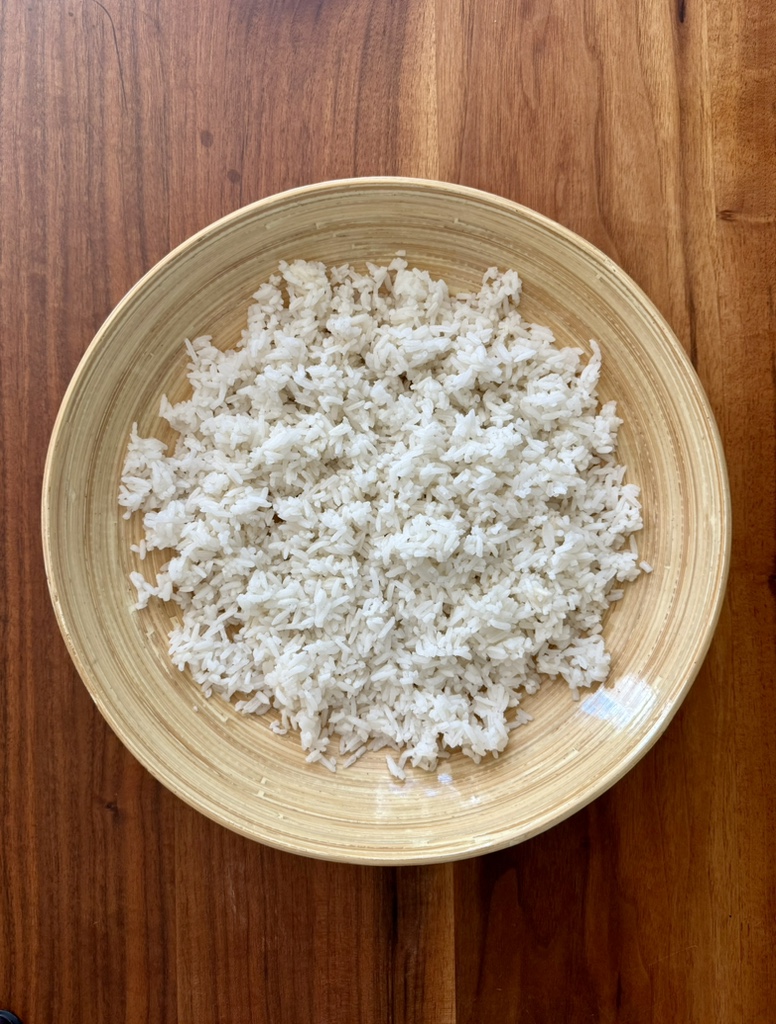
Lao Gan Ma:
Behind Lao Gan Ma is a woman named Tao Huabi. In the 1990s, she began selling homemade chilli sauce with fermented soybeans in Guizhou Province – an ingredient originally intended for her noodle dishes.
Lao Gan Ma is now ubiquitous in Asia, and Tao Huabi’s company generates hundreds of millions in revenue. Therefore, you will most likely be able to purchase their products. There are different varieties, two of which we would like to highlight: ‘Crispy Chilli in Oil’ is a very good substitute for homemade chilli oil. ‘Fermented Soybeans in Chilli Oil’, on the other hand, is the product we recommend most and use in this dish.
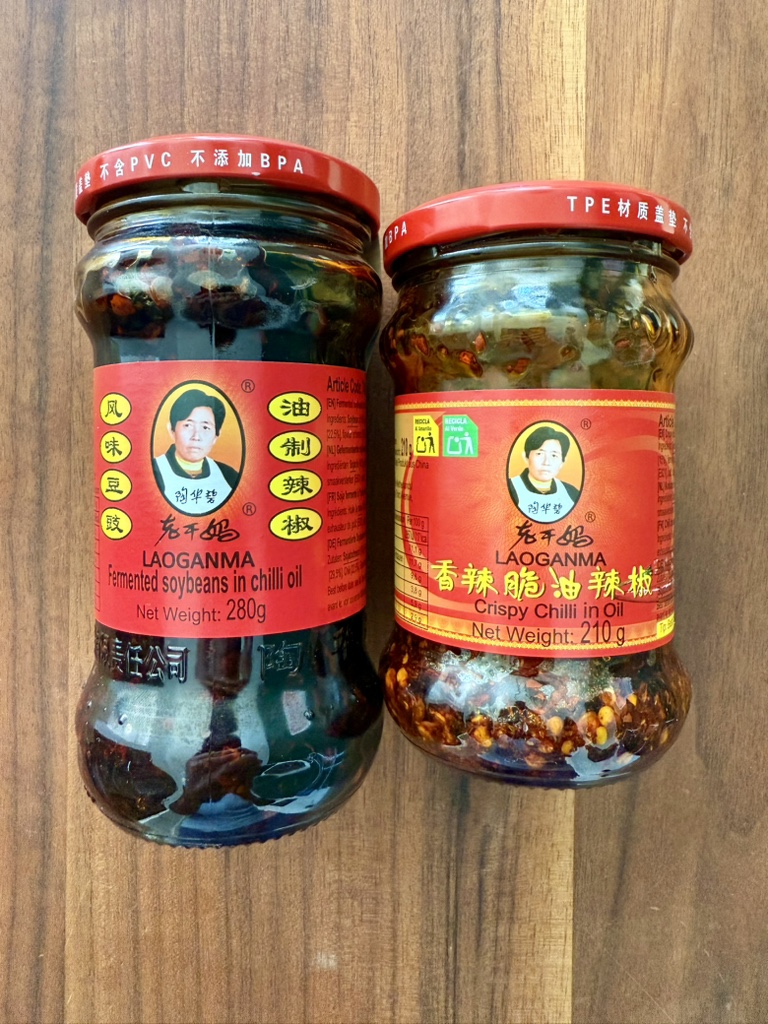
In the region of Lao Gan Ma’s birthplace, Guiyang, fried rice is often prepared as follows:
Pork belly is common there – if you don’t want to eat it, leave it out and use (dried and rehydrated) mushrooms, for example. Other essential ingredients are white cabbage or Chinese cabbage and (black) beans. If you can’t get these, you can use kidney beans, and if you don’t want to cook the beans yourself, you can use canned beans, which are by no means bad and usually contain only the product, water and salt. We chop plenty of garlic, ginger and the white parts of spring onions, and cut the green parts of the spring onions into rings separately. We also like carrots cut into fine strips and one egg per person, but this is optional.
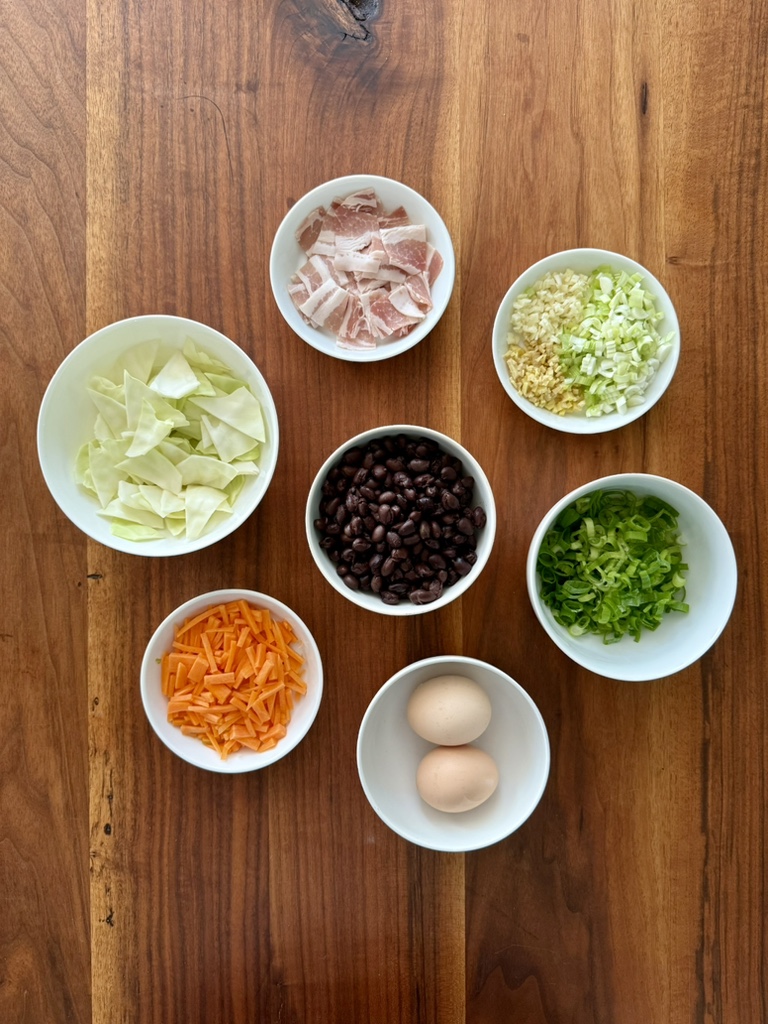
Something that is often needed in Chinese cuisine and always has a place near our stove because it can also be used for other purposes is Chinese cooking wine (‘Shaoxing wine’). We highly recommend using it. We are sure you will love it. This product is probably available in every Asian supermarket worldwide.
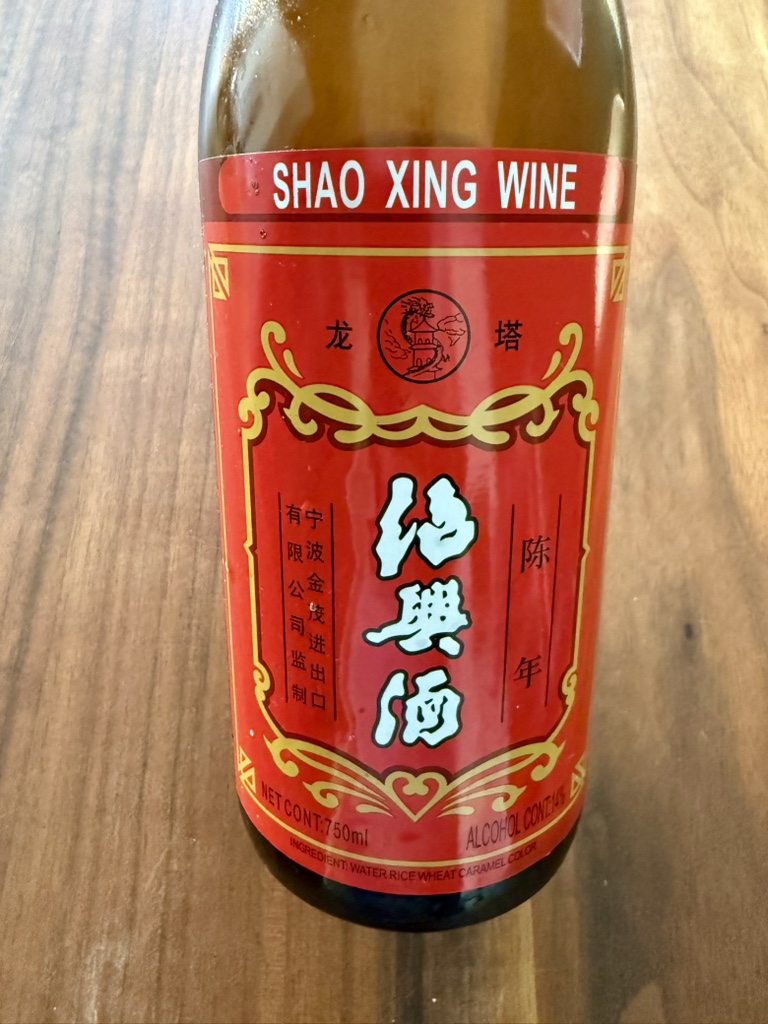
We heat our steel wok to a very high temperature and add the bacon and a little water. The water boils immediately, causing the fat to render quickly, which is always a good technique for frying bacon.
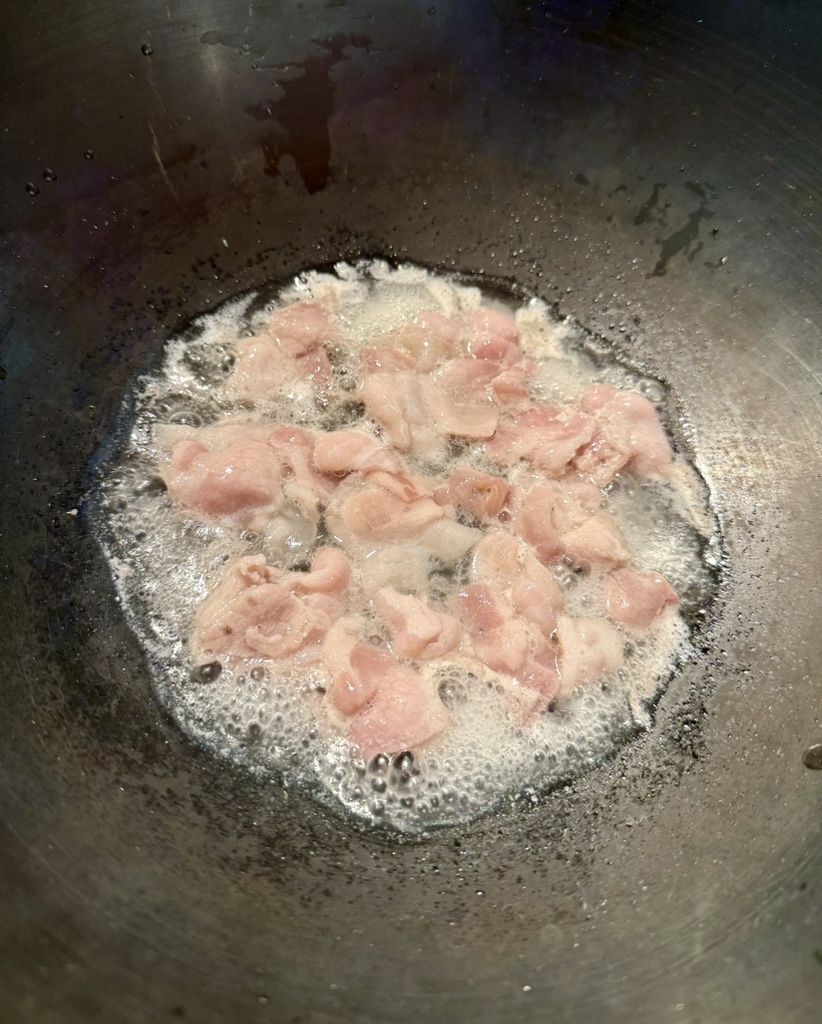
Fry the bacon until it is as crispy as you like it, then remove it from the wok. Next, fry the vegetables in a little neutral vegetable oil over a high heat, stirring constantly. This only takes 2 minutes, then add a little Shaoxing and allow it to evaporate.
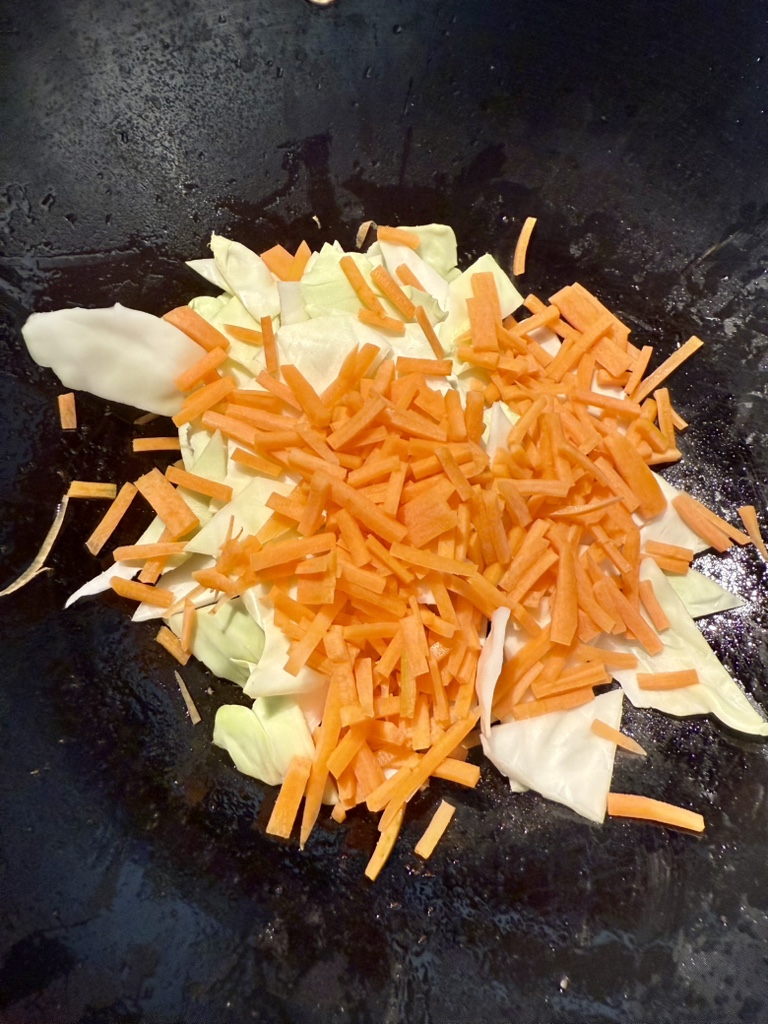
The vegetables are also removed from the wok. Add a little oil, followed by the white parts of the spring onions, garlic, and ginger.
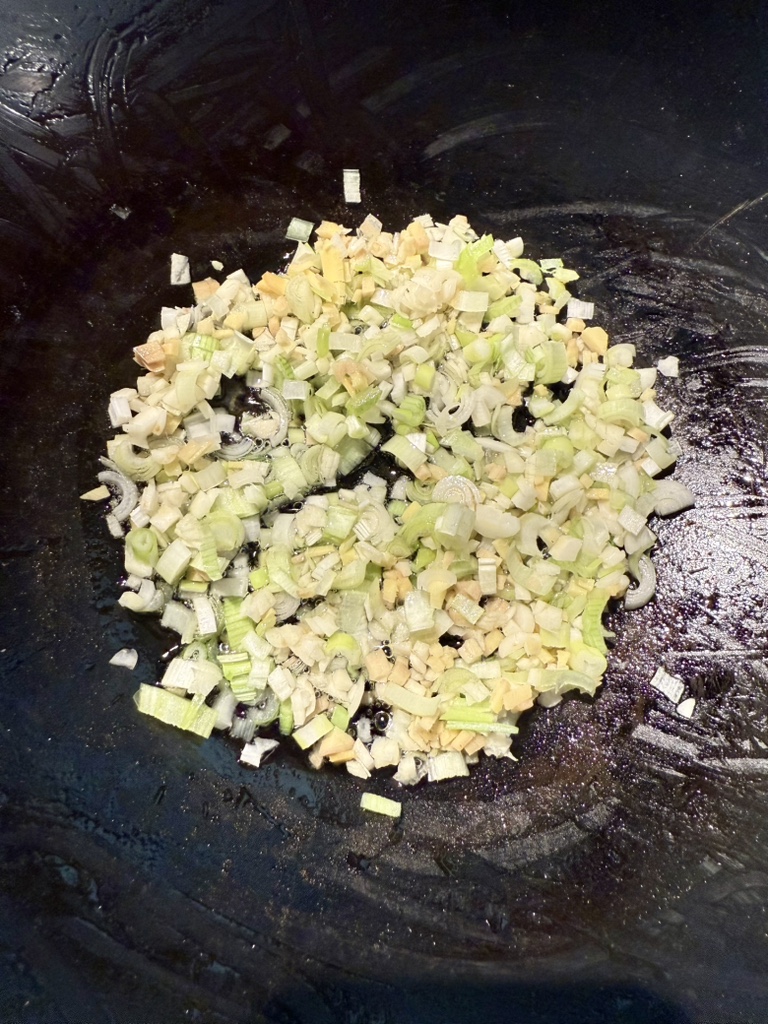
Once everything is fragrant after a good minute, pour in a little more Shaoxing wine and add Lao Gan Ma with a little soy sauce.
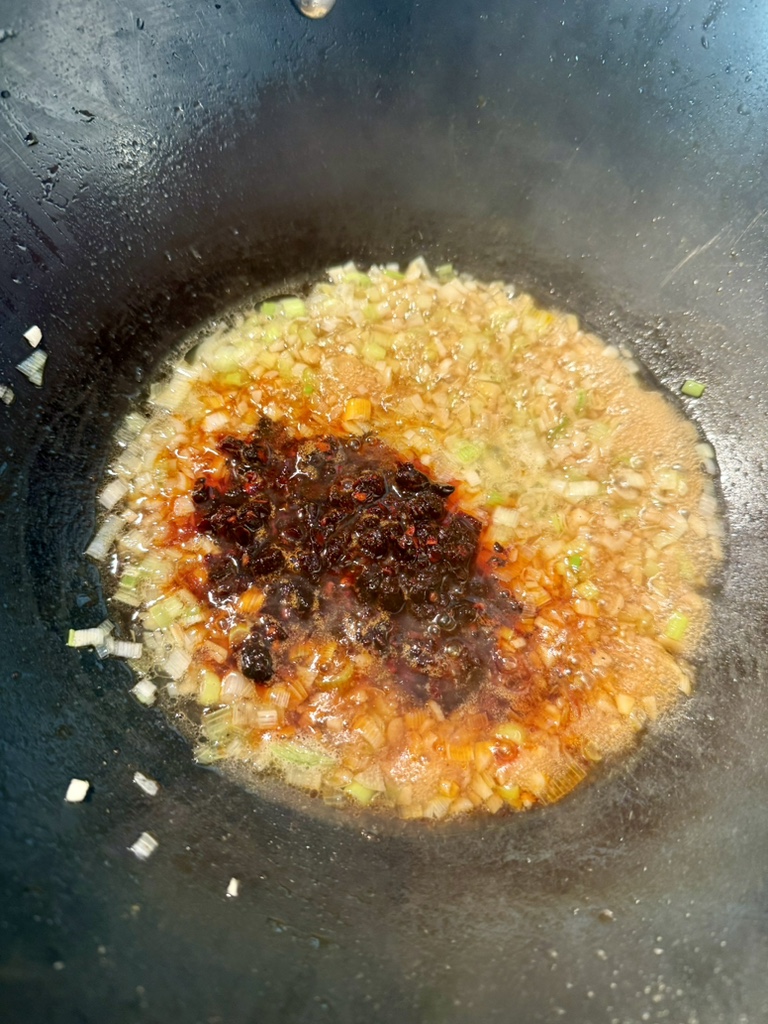
Everything is stirred well and the cooked rice is added immediately. The rice grains are separated further from each other by stirring continuously, absorbing all of the seasoning mixture in the process.
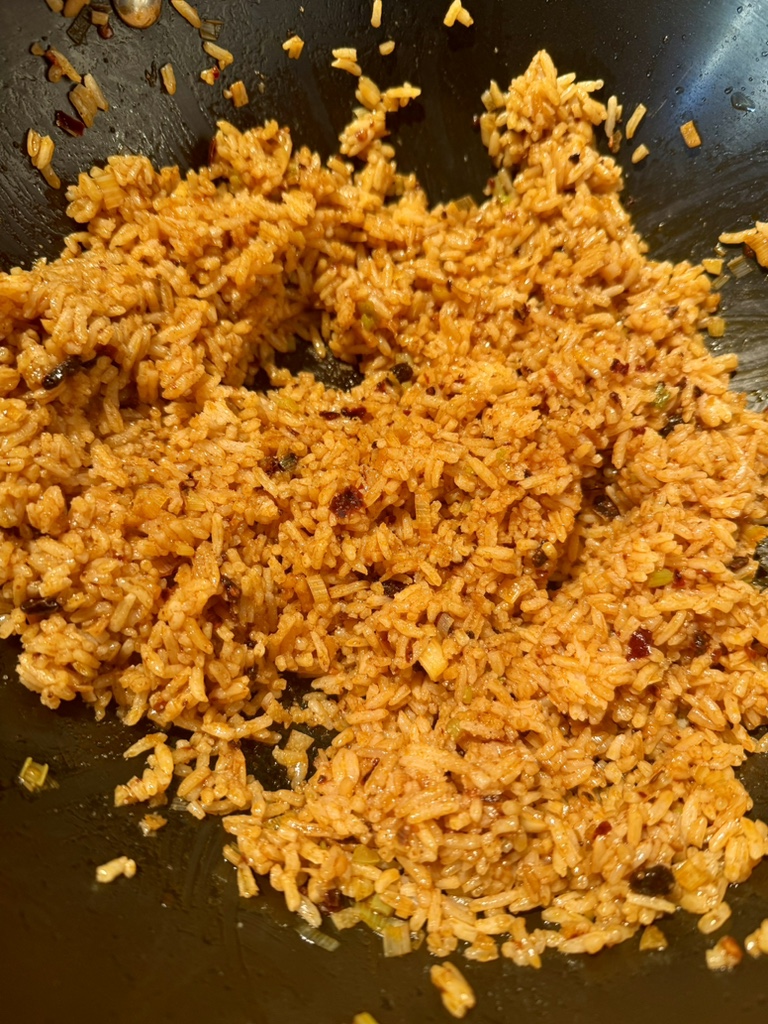
Add the vegetables, cooked beans, and green parts of the spring onions and stir them in. The ingredients just need to be heated through, then the dish is ready. Finally, season to taste with salt and white pepper, but we usually don’t need to add anything at this point.
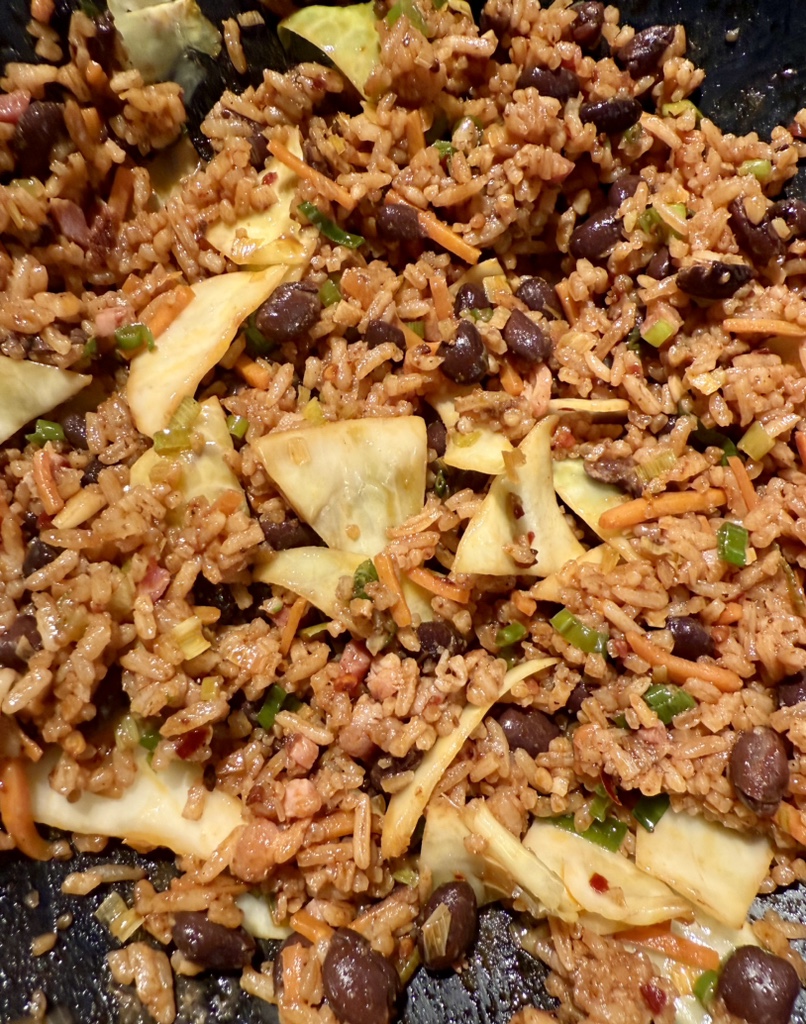
We especially like to eat this with a fried egg.
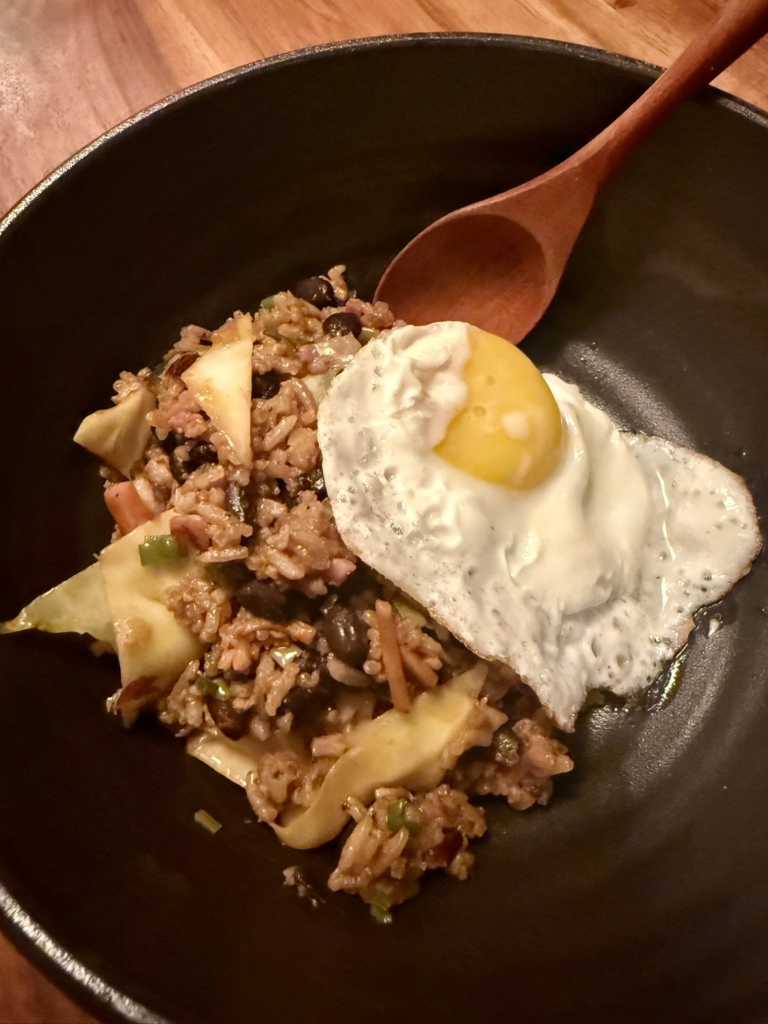
Enjoy.
And may the taste be with you.
Ingredients (for 2 people):
200 g jasmine rice (dry weight) – cooked approx. 450 g
4 strips of bacon
A little neutral vegetable oil
40 g each of white cabbage or Chinese cabbage and carrots
2 – 3 tbsp Shaoxing cooking wine
1 – 2 cloves of garlic
1 cm ginger
2 – 3 spring onions
2 tbsp Lao Gan Ma (‘Fermented Soybeans in Chilli Oil’)
1 tbsp soy sauce
100 g black beans (cooked) – alternatively kidney beans
Season to taste with salt and white pepper
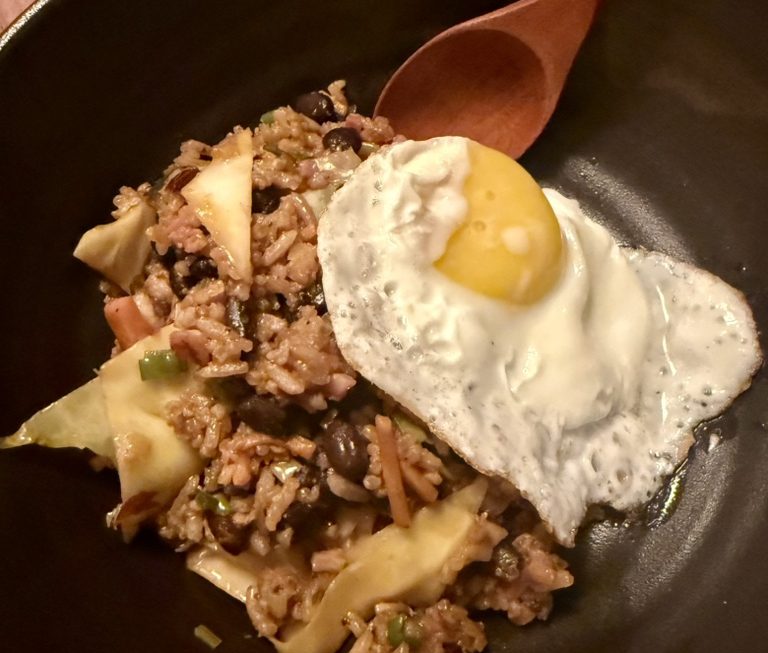
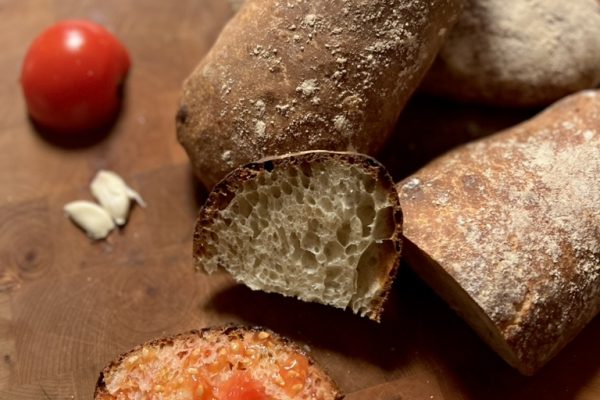
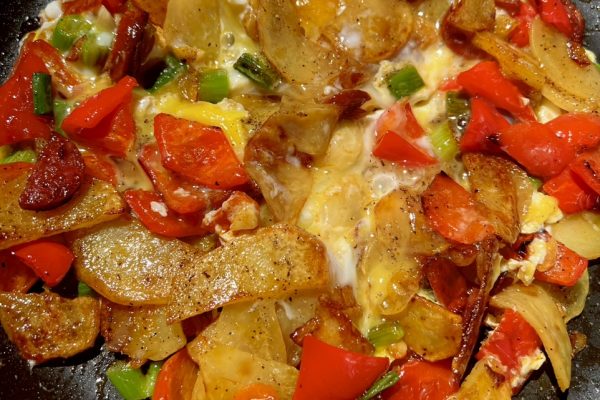

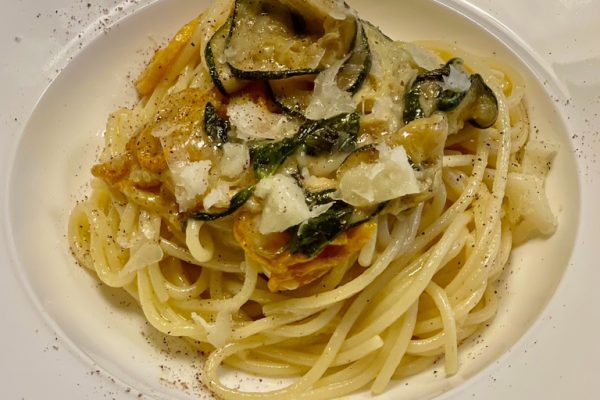

One thought on “Lao Gan Ma Fried Rice”